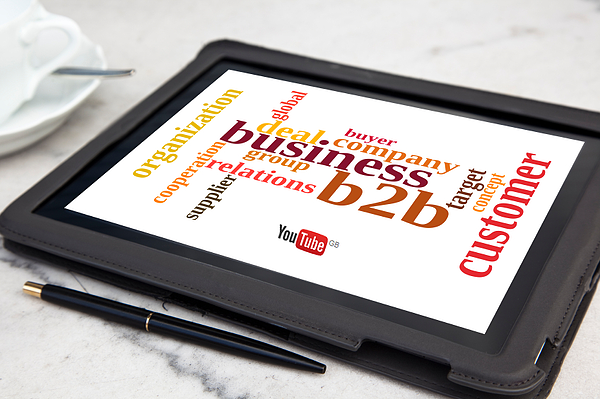How to Use YouTube for B2B Marketing

More and more B2B marketers are finding success with content marketing by utilising YouTube. In fact, a recent study shows that 76% of B2B marketers include video in their strategies, and 72% use YouTube. Additionally, YouTube is now the second-largest search engine, behind Google. Videos on YouTube can also improve search rankings. Yes, YouTube is a viable and effective site that provides a wealth of opportunities for B2B exposure and interaction. The trick, of course, is to do it right. Here are six dos and don’ts of using YouTube in your B2B marketing strategy.
1) Quality First
Other businesses are not going to be interested in transacting with you if the videos you post reflect shoddy workmanship. So, before deciding to create and post videos, make sure you have the resources you need to produce quality videos. Just as with written content, quality is critical to video content. To that end, YouTube offers plenty of tools to help in your endeavour to create quality content.
2) B2B Focused Content
The quality of the video is obviously important, but the content matters, too. In the same way you are busy building your business, other business owners are doing the same. Your viewers don’t have time to waste any more than you do. So, any B2B videos you post must contain high value content. Even though YouTube is technically a social media site, the goal of B2B marketing is not to entertain so much as it is to inform.
So, share videos that are engaging, but useful. For example, product demonstrations, conferences and events, and expert advice are good areas to cover. The goal is to give other businesses something substantial, and not waste their time on filler. When they get meaningful information from your video, you will be remembered.
3) Get Noticed
Just because you’ve created an amazing video doesn’t mean it will automatically go viral, much less be found. Search terms are critical to exposure, so consider them carefully. When writing your tags and video descriptions, incorporate search words and phrases that your target audience will use when they conduct a search. It is SEO for video – and you can read more about how to promote your videos here.
4) Build a Respectable Brand Channel
When your B2B video is found through an organic search, those who stumble across it may not have previously heard of your business. Your quality video may pique their interest though. When that happens, they may click on your video channel to see what else you’ve posted and learn more about your business. Once they do, what will they see? How will your company and brand be interpreted? In order to create the most engaging, professional user experience, view and use the tricks and tips provided on YouTube’s Channel Optimisation and Channel Art pages. Use your YouTube channel to illustrate further to other companies why they should be doing business with you.
5) Integrate YouTube
Social media sites are powerful tools for exposure and brand building, but they work most efficiently when they are integrated together as part of a comprehensive strategy. So, when you post a new video to YouTube, maximise its potential for exposure by linking to it in your next blog and tweeting about it to your B2B contacts.
6) Remember to Track Your Videos
Use YouTube Analytics to monitor the performance of your videos. You can access information on demographics, number of views and traffic sources. The information will help inform your strategy by identifying areas for improvement, as well as those methods that are working well. Google Analytics can help you monitor your brand channel’s performance, like it was your own website.
Integrating YouTube into your B2B marketing strategy makes sense for myriad reasons. It can improve search rankings; quality content can help paint you as an industry authority, and a top tier channel can do wonders for your brand.
Article by Will Williamson


